How Long Does A Soy Candle Take To Set
How to Make Soy Wax Candles
London with Particle Goods started making candles in 2022. She loves scent's link to memories and emotions. Learn more than well-nigh how she got started in this interview. Over the next month, London will be sharing her artistic energy and soy wax expertise with yous! She designed several candle projects for Bramble Drupe and she'll be featured in upcoming videos. She'southward besides collaborating with our creative team to bring you even more projects in the futurity.
In this article, London breaks downward how to make soy wax candles from start to finish. Learn more about choosing a wick, adding fragrance, what temperatures work all-time, and what tools you lot demand. With her tips, yous'll exist an practiced in no time!
Notice everything you need to make soy wax candles here.
Why soy wax?
Soy would be considered a vegan wax, where it does not derive from a living insect or beast. Information technology's made from renewable soybeans, and US-grown soy has a strong sustainable footprint. Soy produces 90% less soot than alkane wax, and does not emit chemicals like toluene, benzene, methyl ethyl ketone, or naphthalene. It burns make clean, doesn't take an scent on its ain like beeswax, and won't go out black soot on the walls or upholstery. Soy wax is less costly than beeswax to produce and is h2o soluble, which makes cleanup a cakewalk.
Soy is an affordable and beginner-friendly wax. With natural ingredients/products in high need, soy is familiar to the marketplace and well sought out. While fragrance tends to be more subtle in a soy candle, it withal holds scent well and produces less soot than other wax types. Features to look for in soy wax would be a high fragrance load capability (x%+), good glass adhesion, and a potent cold and hot throw. If you're worried virtually ecology impact, expect for US grown not-GMO.
Choosing your candle container
Soy burns hot, so your container needs to withstand high temperatures. Glass, ceramic, and metal are all suitable for candle making. Drinking glass with a heavier bottom and even walls will agree in heat and likely give you better adhesion considering information technology will cool evenly. Plastic is not recommended, as information technology can melt and release chemicals into the air, or cause a burn down. Wood and raw dirt containers such every bit terra cotta are too porous and would not exist suitable for candles.
Choosing your candle wick
Forest wicks, cotton core wicks, and paper core wicks all piece of work well for soy container candles. Use the manufacturer'south suggestions for the size, and then test information technology to make certain information technology burns well.
Make certain your wick has a tab at the bottom, or a prune if using wood wicks, that tin can be adhered to the bottom of your container. For wood wicks, this is all you lot'll need; the wick clip holds it upright and centered. For cotton and paper wicks, a bow tie wick centering device is my favorite because it fits several containers and tin can also be used with a double wick. A clothespin tin can work too!
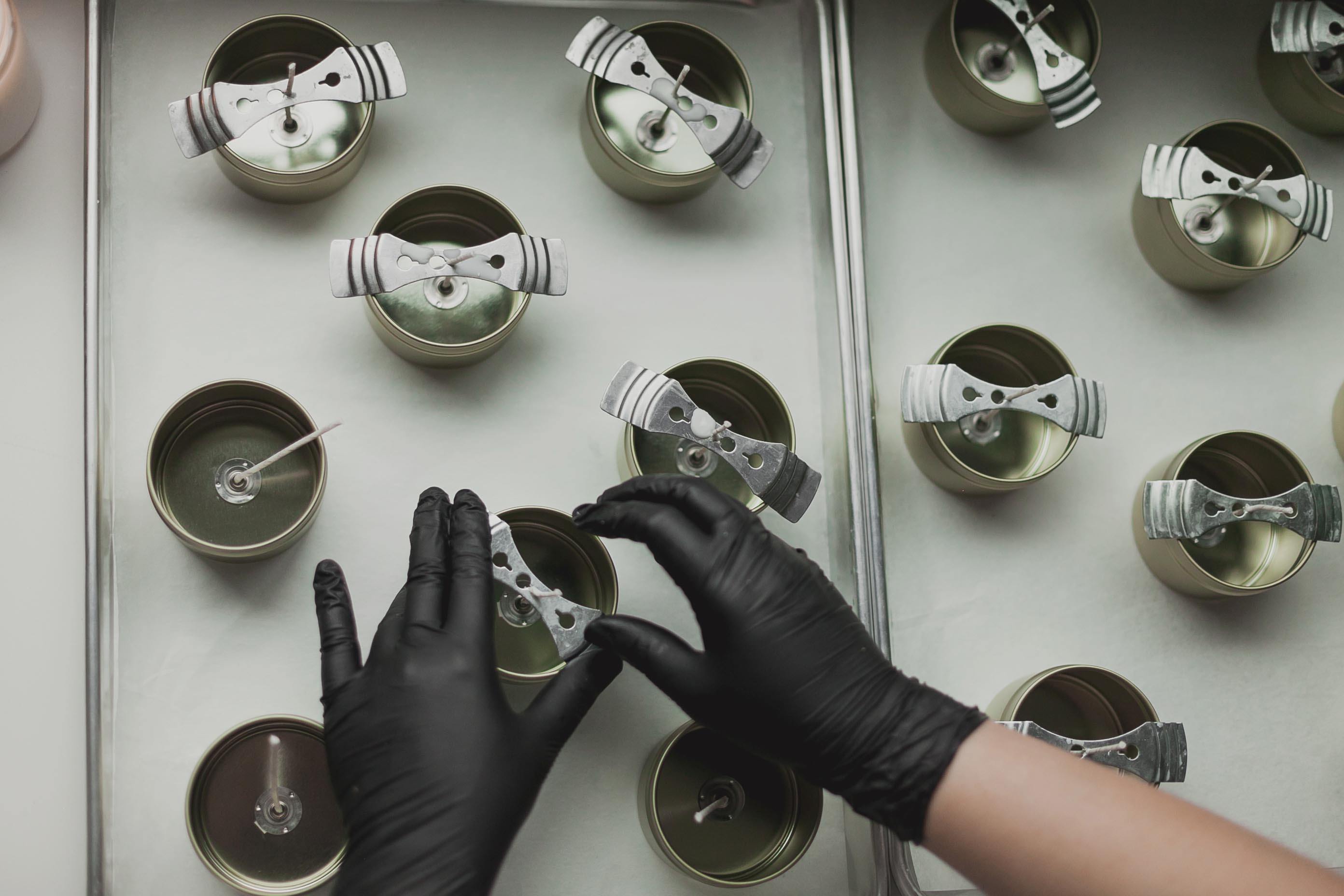
Melting soy wax
I recommend either a double banality or a wax melter. Melters can overheat your wax, and so it needs to be able to regulate the temperature and have an auto shut-off safety characteristic. Do not oestrus the wax directly in a pan and do not exceed 200° F for soy, or information technology volition yellow.
Other peachy household tools are:
- A good kitchen scale to ensure you're getting the proper measurements
- Woods or silicone spoon/spatula for stirring
- Parchment newspaper to protect your work surface
- A digital thermometer
- A spray bottle of isopropyl alcohol and paper towels for cleanup
I always go on some gloves handy too.
To begin, place the parchement newspaper on your work surface. Plow on your wax melter or place a large pot on the stove and fill it halfway with water. Then, place a pot on top to brand a double banality, plough the heat to medium, and keep an eye on it. Slowly add your soy wax. Now just permit information technology melt! That can accept anywhere from 10-30 minutes, depending on the size of your batch.
Calculation fragrance to candles
How much you add varies based on preference and density of the oil. Some oils (like those containing vanilla) can be stronger than others. It'due south a expert rule of pollex to start around 6%, or one oz. of fragrance per 16 oz./i lb. of wax. Virtually wax manufacturers accept a recommended fragrance load of 6-viii% with a max of x-12%.
Citrus and some herbal oils, specially those primarily made of essential oils, accept a lighter density and therefore may burn off also apace or the fragrance itself may smell "off." Try adding these oils at a lower temperature and/or blending with a higher-density oil. About fragrances with vanillin/vanilla will be easier to work with due to their high density. Make sure you're using oils fabricated for candle making and not perfume or cologne, which contain flammable ingredients like alcohol and dipropylene glycol.
Every bit for what temperature to add together fragrance, refer to the manufacturer's recommendation. You want to bring the wax to a higher temperature than simply the melt bespeak to ensure the wax molecules have fully expanded. That way each fragrance molecule will be fully encapsulated and trapped within the wax. Nearly fragrances should be added between 175-185° F. Make sure your wax has been removed from the heat source before adding fragrance oils.
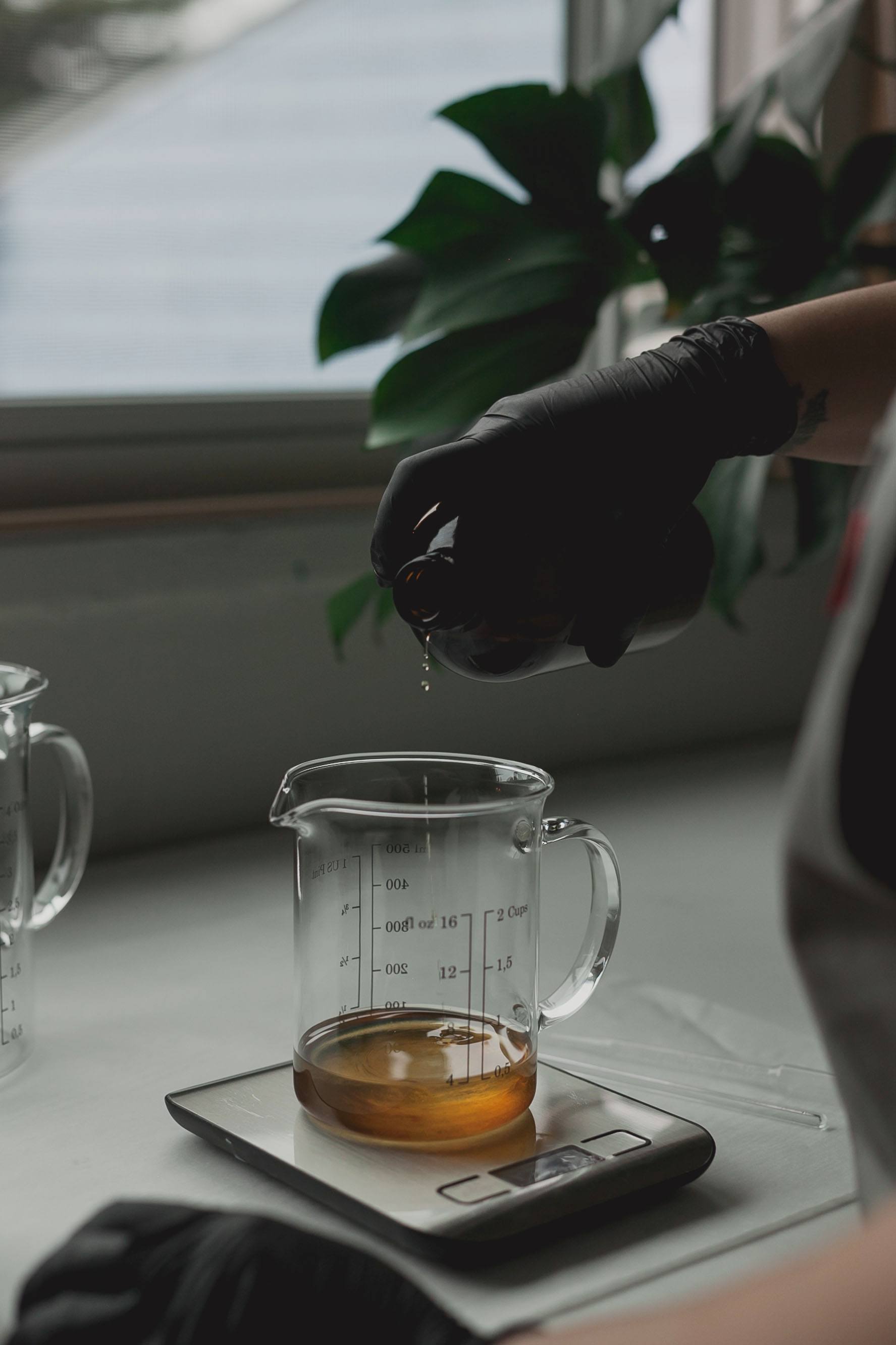
Calculation extra oils and butters to candles
Massage candles have grown in popularity, and would be a good project to incorporate extra butters and oils. For traditional candle projects, you should not exist calculation extra oils and butters because it will cause the wax to soften and impact the fire quality and fragrance throw. Some candlemakers tout the benefit of a petty fractionated coconut oil in their soy wax to reduce frosting and increase glass adhesion, but call back that you lot'll accept to business relationship for that oil in your fragrance percentage too. Your wax is like a sponge - it can simply encapsulate then much oil, so calculation coconut oil may reduce your fragrance load.
Pouring the candles
The pouring temperature depends on the wax. Each blend/make of soy wax may have its ain properties and additives that affect the pouring temperature. The manufacture standard is to pour around 135° F, or just as the wax starts to wait slightly opaque, but some wax can be poured every bit high every bit 160-175° F. Pouring temperatures also depend on the overall temperature of your workspace where your candles will cool, and on a common cold day y'all may need to increase your pouring temp.
Candle cleanup
Nigh pouring pitchers on the market are made of aluminum, and then they tin't exist run through the dishwasher. Most equipment and surfaces can be easily cleaned with hot soapy water or isopropyl alcohol.
Curing candles
This is often a debate amongst makers. Soy wax encapsulates/traps fragrance oil molecules during the bonding process. Soy does not readily release or evaporate fragrance similar alkane series wax and takes longer to bind together. Allowing your candle to cure (residue) for several days before burning for the first fourth dimension will permit the soy wax and fragrance molecules to fully bind together. Cure times are recommended at a minimum of 3-4 days and a maximum of ii weeks. Performing your own tests will help you make up one's mind how much time is needed to get the optimal hot throw.
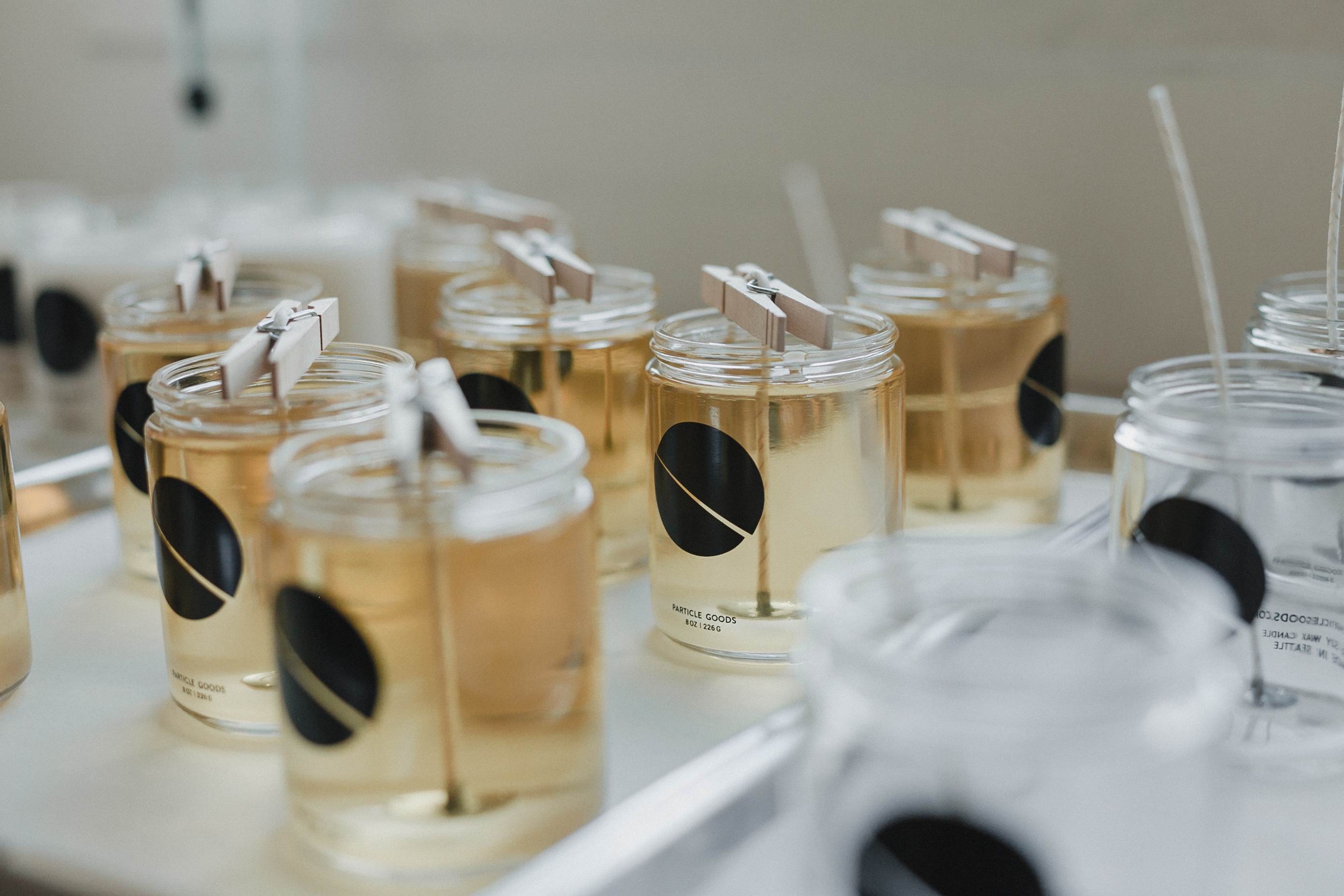
Troubleshooting common candle issues
Frosting: Soy and other vegetable waxes are natural and therefore prone to frosting. This looks similar small-scale snowflakes or crystallizing on the surface of the wax. This is 100% artful and does not bear upon the candle. If your candle has frosted, at that place is no style to ready it after the fact.
- Attempt pouring at a higher temperature or lower temperature until y'all notice a reduction.
- Try stirring less and do not stir before pouring, simply when calculation fragrance oil.
- Some fragrance oils, and especially essential oils, are more decumbent to frosting if not poured at exactly the correct temperature.
Delamination/wet spots: Sometimes the wax may pull away from the glass in sure spots. This is common and caused by many factors, including cascade temp, ambient room temp, and cooling room temp.
- Make certain yous're using a wax blend specifically for container candles.
- Try pouring at a hotter temperature. Start at +five degrees at a time until it's resolved.
- Before pouring, endeavour preheating your glassware on the lowest oven setting until merely warm to the affect but not hot.
- Make sure the room you lot're working in stays at 70 ° F during pouring and cooling. Yous'll most likely see wet spots occur overnight when the temperature drops.
Uneven tops or cratering: Sometimes the top of your candle looks bumpy or has sinkholes after cooling. This could be the pouring temp or the room temp.
- Make sure not to move your candle around later on pouring. Gear up it in a spot to absurd and leave there until fully cured.
- Try pouring at a hotter temperature.
- Endeavour leaving 1/4" room at the top, and and then acme off with a second cascade of wax after the candle has cooled.
- Endeavor reheating the top with a estrus gun. DO NOT Apply A BLOW-DRYER. Heat guns are condensed heat with petty airflow, while a blow-dryer will not reach a high enough temp and volition brand a huge mess.
Sweating: If you see small chaplet of oil on the surface of your candle subsequently cooling, this is what's known every bit sweating. This is caused by either:
- Adding too much fragrance. The wax is like a sponge and tin only agree so much fragrance oil. The backlog will leach out.
- Not incorporating your oil well. Endeavor adding the fragrance at a higher temperature similar 180-185 ° F and stir gently but continuously for one-2 minutes.
Wax discoloration: Candles may discolor for several reasons, earlier or after burning.
- Fragrance oils with vanillin content will by and large discolor immediately, but definitely if exposed to UV light over fourth dimension. Try adding a UV inhibitor to the wax when pouring to reduce this.
- Wax was heated above 200 ° F for a prolonged period of fourth dimension.
- Essential oils can ofttimes discolor the wax and will continue to darken with time/UV exposure.
- Wax may discolor slightly after burning, and you'll find that information technology appears darker after it's cooled again. This is natural with many fragrances.
- Historic period. Candles can fade or discolor over time. By and large, candles will get-go to change afterward ix-12 months, and sooner if exposed to UV light.
No hot throw: This can be caused past numerous things, and it's of course very frustrating. Here's where I would start troubleshooting:
- Ensure you're allowing the candle to achieve a full melt pool. The throw comes from the melt pool, so in lodge to fill the room with fragrance, it can take 2-3 hours of burn time.
- Wick size is ofttimes the culprit here. Brand sure you lot're using the right size wick. Pay attention to flashpoints in your fragrance. The college the flashpoint the denser the oil, the lower the flashpoint the lighter it is. Higher-density oils need more heat (larger wick) to create the combustion needed to melt the wax and release the fragrance. Lower-density oils need less and therefore a smaller wick.
- Too much fragrance oil
- Too little fragrance oil
- The wax blend. Because soy has a higher melting signal, information technology takes a lot of estrus and energy to fire. This ways that soy does not release fragrance as readily as another types of wax. Try a dissimilar wax blend.
Smell smells weird/bad: Some oils simply aren't uniform with candle making. Brand sure to use high-quality oils specifically made for candles.
- Some oils, similar herbals and citrus, are known to exist delicate and have a lower density. Mixing them with a higher-density oil like vanilla, for example, can sometimes ready this.
- Try using a smaller wick size.
- All fragrances and essential oils have a shelf life. Odour molecules can oxidize over time and break downwards. Fragrance and essential oils generally have a shelf life of six-12 months. Be sure to shop them in opaque or nighttime drinking glass bottles, and exercise non store in metal or plastic containers.
Wax rest on the container later burning: Some residue on the walls of the container is normal. Nigh likely this will lessen as the candle continues to fire down. If there is a significant amount of wax still after a 4 hour burn, you may need to wick up a size.
Flame is high and wick is putting off smoke or mushrooming during burn: This could exist due to several issues:
- Wick not being trimmed before each new burn down. Wicks should e'er exist trimmed to ¼" earlier each burn.
- Wick size is too big and there is carbon build up
- Candle is in a room with a draft or besides much moisture (like a steamy bathroom)
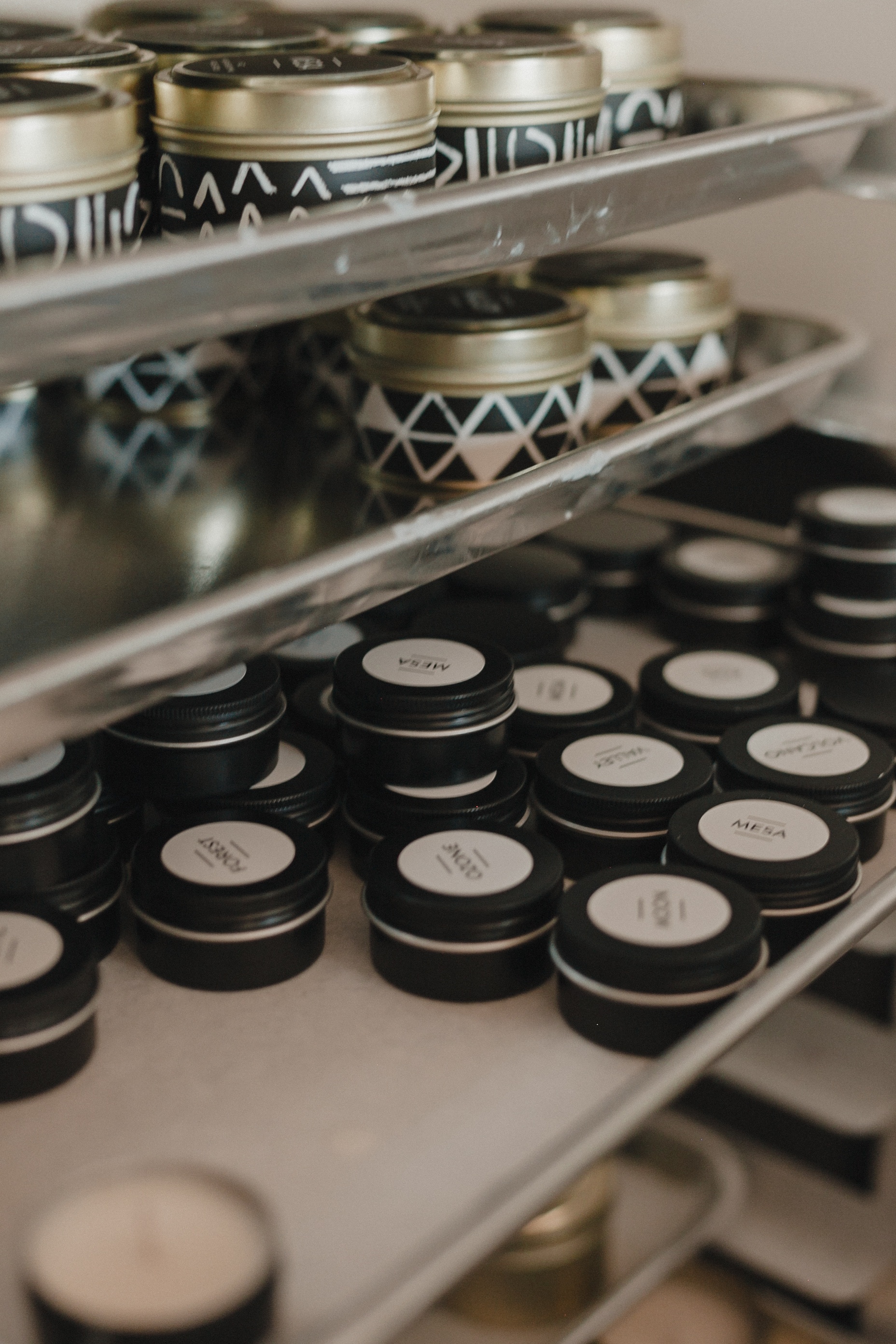
Glossary
- Burn time: The amount of time information technology takes for the wax in a candle to be consumed completely
- Cold throw: The strength of fragrance emitted from the unlit candle
- Double boiler: Ii nested pans with h2o in the lower one, designed to allow ho-hum, fifty-fifty heating
- Essential oil: Distilled oil from plant matter, 100% natural oil
- Flashpoint: The temperature at which a substance can ignite if information technology comes in contact with an open flame or spark
- Fragrance oil: Full-bodied scent oil made of either natural or synthetic ingredients, or both
- Fragrance load: Maximum amount of fragrance the wax can hold
- Frosting: White crystals that resemble snowflakes on the surface of the wax
- Hot throw: The strength of fragrance emitted from candle while burning
- Melt point: The temperature at which wax will kickoff to liquefy
- Melt pool: The liquified wax pool as the candle is burning
- Mushrooming: Carbon build up on the tip of the wick while or after burning
- Sinkhole/crater: Cavity that forms when the wax hardens and contracts
- Tunneling: When a wick does not brand a total cook pool in a candle and leaves a ring of unmelted wax on the sides
- Wet spots: An area where the wax has pulled away from the container, leaving spots or large areas that have shrunk away. Unremarkably a trouble with container candles in articulate drinking glass. As well referred to as delamination.
- Wick: Material that delivers fuel to the flame in a candle
- Wick tab: Flat metal disc that holds the wick at the bottom of a candle
- Wick clip: Used to go on the wick upright and centered while cooling
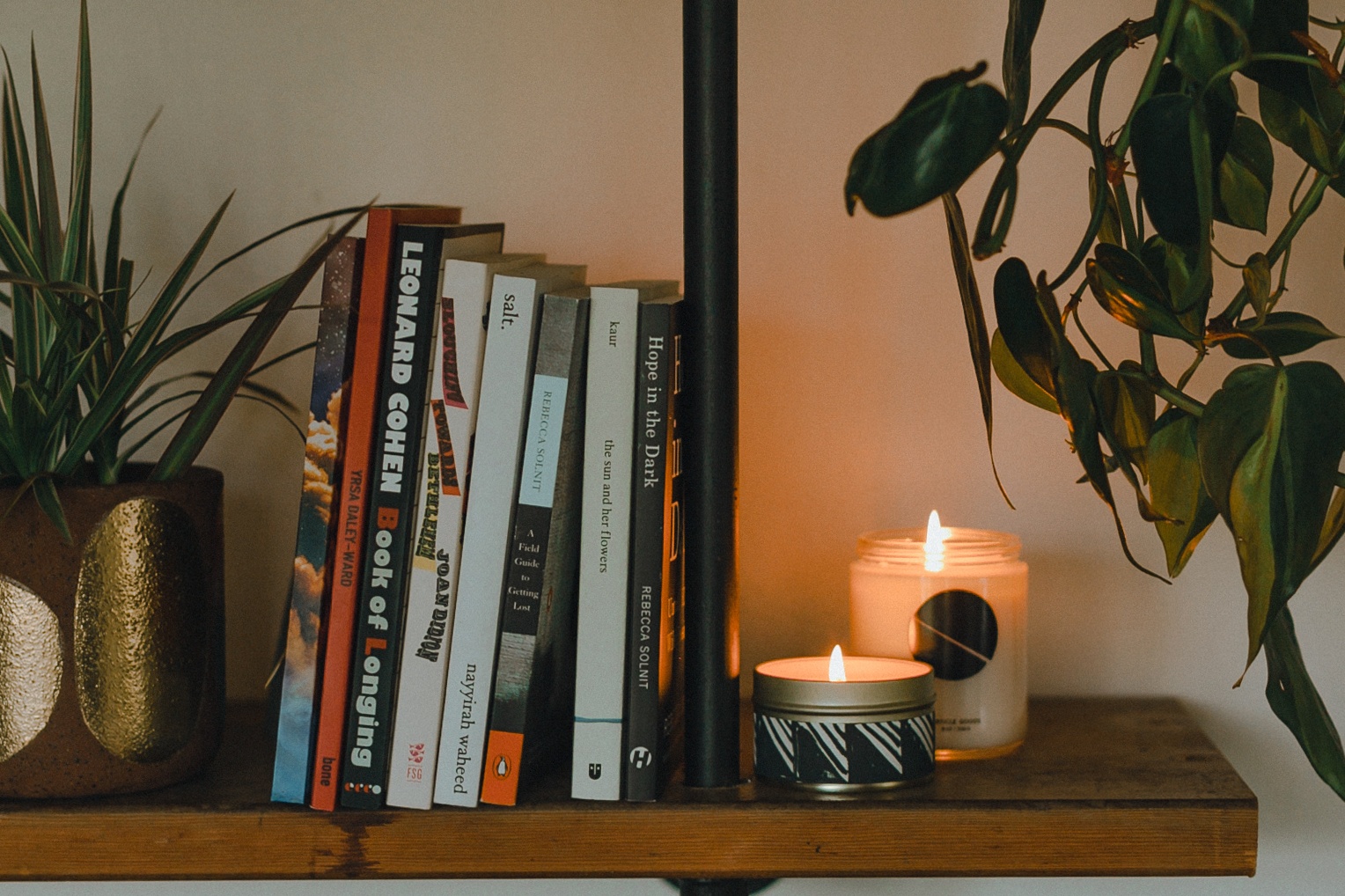
Photos courtesy of Particle Goods.
Set to get started? Find soy wax candle making recipes hither and soy wax candle making kits here.
Source: https://www.brambleberry.com/how-to/candles/art0126-soy-wax-101.html#:~:text=Allowing%20your%20candle%20to%20cure,a%20maximum%20of%202%20weeks.

0 Response to "How Long Does A Soy Candle Take To Set"
Post a Comment